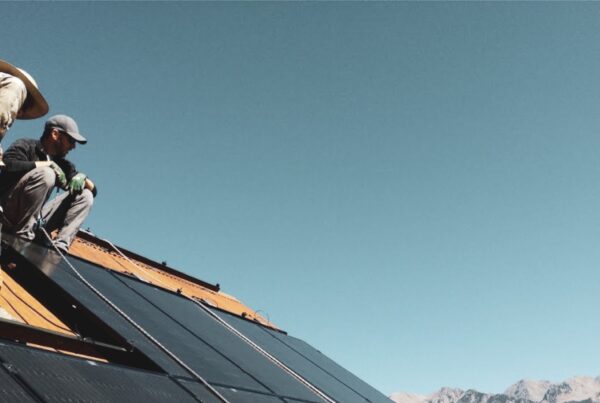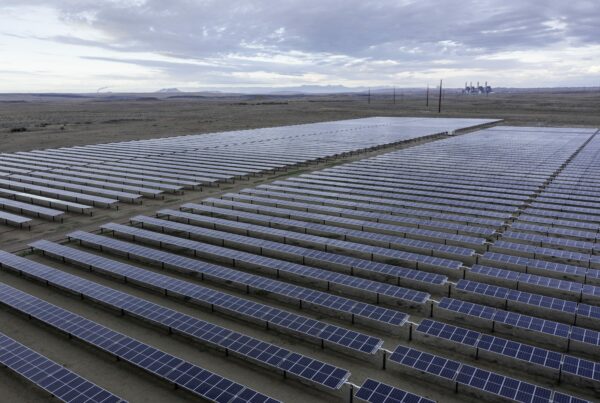This blog series covers the monthly La Plata Electric Association (LPEA)* Board of Directors meetings. We’re tracking the board for transparency and accountability, as well as to stay current on their renewable energy initiatives. Find past and future spotlights here.
Get LPEA Spotlight in your inbox!
[button color=”extra-color-1″ hover_text_color_override=”#fff” size=”large” url=”” text=”SUBSCRIBE” color_override=”#a1d078″]
This month, the La Plata Electric Association* (LPEA)’s Board of Directors narrowly approved a subcommittee for a long-term strategy review.** Before the vote, some LPEA members voiced support for the review while others listed worries about the subcommittee’s intentions.
Despite varying concerns, one message was clear: We’re all after low rates and reliable power. The problem is that we don’t have a plan to ensure LPEA’s already high rates don’t rise in the future. That’s where the subcommittee’s analysis comes in.
The LPEA Board of Directors “determines the policies and overall directives of the cooperative, plus provides the LPEA staff with goals and objectives for the business.” (From LPEA website).
It is the Board of Director’s job to look to the future and determine policies to guide LPEA’s path. As energy technologies rapidly change, we must consider how LPEA can take advantage of low cost energy so that southwest Colorado isn’t left behind.
WHY DOES LPEA NEED TO LOOK LONG-TERM?
LPEA’s rates are high.
Tri-State, the company that sells LPEA electricity, charges LPEA 7.4c/kWh for power and transmission. [1] LPEA’s CEO says this already puts our rates “in the upper range when compared with other electric coops and muni’s.” [2]
Tri-State’s rates have gone up an average of 2.9% per year over last 10 years and rises of at least 10% are predicted by 2026. [3]
Renewable energy is cheaper.
For a long time, centralized coal was the cheapest way to produce energy, but in 2017, Xcel Energy got bids in Colorado for wind at 1.8c/kWh and solar at 3c/kWh. [4] Solar and wind plus storage are selling for 2.1-3.6c/kWh. [5]
These are median bids, which means half were cheaper. These bids put wind and solar plus storage at less than 74% of the operating costs of all coal plants currently in Colorado. [6] That means that affordable storage can now fix the main shortfall of renewables: that they don’t run all the time.
LPEA’s hands are tied.
The energy economy is rapidly changing, but LPEA is powerless to benefit from it. In our current contract, LPEA is required to buy 95% of our power from Tri-State until 2050.
But Tri-State is locked into paying off its expensive coal fired power plants. Last spring they told LPEA that they don’t need new sources of power until 2025, so we’re stuck with their coal and their debt of over $3billion. [7, 8]
Before the vote, a flyer went around town stating the potential new “committee may be designed to only support one position – the buy out.” But as we’ve understood, that was never the goal. And if it is, we must all object.
The purpose of the LPEA subcommittee has been, and must continue to be, to investigate all of our options. As our elected Board Directors it is part of their responsibility to find the best strategy to keep our rates low in this changing energy economy.
There are many options LPEA could consider. Perhaps there are opportunities to shorten or modify the Tri-State contract, utilize home batteries and controlled demand, raise the 5% local generation limit, or add local renewables under existing terms. Perhaps LPEA could structure a full or partial buy out in a way that would lower rates. Perhaps there’s an option we’ve not thought of yet.
Perhaps, perhaps, perhaps.
The LPEA board can’t know what’s best for LPEA until they do the research. Without it, they’re looking in the rearview instead of ahead, which should concern all of us. As a community, we need to sit down and strategically review LPEA’s options.
The LPEA board could do the work to develop a strategy review that we all agree on. But in order to succeed, the subcommittee should be diverse, transparent, inclusive, and unbiased.
We were happy to hear that the appointed subcommittee members represent all four LPEA districts and include a variety of viewpoints.*** The meetings are always open to the public, but they should be recorded for members who cannot attend. When the committee concludes, a public meeting should be held to present the findings and public input should be collected. Lastly, if any board members could profit or benefit from the subcommittee, that information should be made public immediately and the director should not be able to serve on the subcommittee.
The unbranded flyer that was passed around also stated, “If you believe that our environment AND our rates are important, a fair and unbiased view must be considered that will benefit ALL members.” We agree.
Let’s demand a forward looking, fair, and transparent process. You can reach out to your LPEA representative here. Together we can unveil the best path to a less expensive, clean, and reliable energy future.
FIRST STRATEGY REVIEW MEETING:
Wednesday, January 31, 1-4pm at the LPEA Durango headquarters.
* La Plata Electric Association (LPEA) is a member-owned rural electric cooperative that distributes power to La Plata County, Archuleta County, and parts of Hinsdale and Mineral counties in Southwest Colorado. LPEA buys 95% of its power from Tri-State Generation and Transmission (see below).
** VOTED FOR SUBCOMMITTEE: Directors Unger, Turner, Bassett, Landis, Lynch Lyons
VOTED AGAINST SUBCOMMITTEE: Directors Kohler, Alley, Huntington, Barger, Montoya
ABSENT: Director Formwalt
*** According to an LPEA press release, the subcommittee board will include Directors Guinn Unger (District 4), Britt Bassett (District 3), Bob Lynch (District 1), and Dan Huntington (District 2) as committee chair.




Who was so stupid as to lock us into a contract that will prevent any changes until 2050?? Our electric bill is by far our largest utility bill.